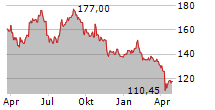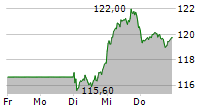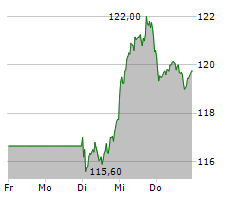- Cohort analyses from the WILLOW study reveal clear proof of concept in patients with CLE and SLE with active lupus rash, showing clinically meaningful improvement in disease activity at Week 16
- Enpatoran is a potential first-in-class oral therapy for CLE and SLE that is thought to selectively block the activation of Toll-like receptors (TLR)7 and TLR8
- Lupus rash can lead to physical discomfort and emotional distress, highlighting the need for effective treatments to manage its signs and symptoms
Not intended for UK-, US- or Canada-based media
Merck, a leading science and technology company, today announced positive data on enpatoran, an investigational, oral, novel TLR7/8 inhibitor, demonstrating clinically meaningful reduction in disease activity in patients with cutaneous lupus erythematosus (CLE) and systemic lupus erythematosus (SLE) with active lupus rash. The findings are from Cohort A of the Phase 2 WILLOW study (NCT05162586). Results will be presented at the 16th International Congress on Systemic Lupus Erythematosus (LUPUS 2025), taking place May 21-24 in Toronto.
WILLOW is a global, multicenter, randomized, placebo-controlled Phase 2 study evaluating three doses of enpatoran taken twice daily (25 mg, 50 mg and 100 mg) versus placebo plus standard of care (SoC) over 24 weeks. The study features a unique design across two lupus cohorts, including both patients with active SLE and CLE. Cohort A focused on patients with CLE or SLE with active lupus rash and evaluated organ-specific disease activity using the Cutaneous Lupus Erythematosus Disease Area and Severity Index Activity (CLASI-A) score, a well-defined endpoint in CLE studies that measures different aspects of mucocutaneous manifestations. Cohort B was designed to evaluate the effect of enpatoran on systemic disease activity of SLE patients with the BICLA response endpoint.
Cohort A met its primary endpoint, demonstrating a dose-response relationship and showing a clinically meaningful improvement in CLASI-A scores at Week 16 (p 0.0002). Additionally, at Week 24 up to 91.3% of patients receiving enpatoran achieved a CLASI-50 response (=50% improvement from baseline), and up to 60.9% achieved a CLASI-70 response (=70% improvement), compared with 38.5% and 11.5%, respectively, in the placebo group. In this cohort, enpatoran was well-tolerated, and exhibited a manageable safety profile consistent with previous studies, with no new safety signals identified.
"Lupus can make navigating everyday life difficult. The skin manifestation, known as lupus rash, often comes with persistent itching, which can lead to scarring and hair loss. This can significantly impact the physical, emotional and social well-being of those living with lupus, underscoring the urgent need for effective treatments," said Jan Klatt, Head of Development Unit Neurology Immunology for the Healthcare business of Merck. "We are encouraged by the WILLOW results, where we observed clinically meaningful efficacy with a favorable safety profile in people living with lupus rash. Based on these results, discussions with health authorities on a global Phase 3 program with enpatoran are underway."
In addition, and confirming the biological activity, treatment with enpatoran in Cohort A also led to a rapid reduction in interferon gene signature scores beginning at Week 2, which was maintained to Week 24, confirming the involvement of the TLR7/8 pathway in interferon activation in CLE. Overall, evidence from the WILLOW study supports the continued development of enpatoran as a treatment for autoimmune diseases like lupus.
On Cohort B of the WILLOW study, promising efficacy results were observed in prespecified subpopulations, even though the primary endpoint of dose response was not met. The full readout from this cohort will be presented at the European Alliance of Associations for Rheumatology Congress (EULAR 2025).
Principal investigator Prof. Eric Morand of Monash University and Monash Health, said, "These new findings offer promising evidence that, with enpatoran, we may be able to advance outcomes, which remain suboptimal for most patients. The data from the WILLOW study further our understanding of TLR7/8 inhibition in SLE and CLE, which is a novel mechanism of action that may offer new hope for patients."
Toll-like receptors (TLR)7 and TLR8 play a relevant role in lupus pathogenesis and are associated with severe manifestations of the disease. By inhibiting these key disease drivers, enpatoran's unique proposed mechanism of action aims to enhance therapeutic efficacy while preserving the body's immune response, potentially overcoming limitations of existing lupus therapies.
About Enpatoran
Enpatoran is a selective Toll-like receptor (TLR)7/8 inhibitor under investigation for the treatment of systemic lupus erythematosus (SLE) and cutaneous lupus erythematosus (CLE). By inhibiting TLR7/8 activation, enpatoran may help reduce pro-inflammatory cytokines and autoantibody production, potentially addressing underlying mechanisms of chronic inflammation and disease progression in lupus. With its novel proposed mechanism of action and oral administration, enpatoran has the potential to be a first-in-class treatment for patients across lupus conditions. Enpatoran is currently under clinical investigation and is not approved for any use anywhere in the world.
About the Phase 2 WILLOW Clinical Study
WILLOW (NCT05162586) is a randomized, double-blind, placebo-controlled Phase 2 proof of concept and dose-finding study designed to evaluate the efficacy and safety of enpatoran in patients with systemic lupus erythematosus (SLE) and cutaneous lupus erythematosus (CLE). The study incorporates a basket design, including two cohorts Cohort A including patients with CLE or SLE with active lupus rash and Cohort B including patients with active SLE. The WILLOW study aims to advance the understanding of enpatoran's therapeutic potential and to help address significant unmet needs in lupus treatment.
About Lupus Erythematosus
Lupus erythematosus is a chronic autoimmune disease that can affect various parts of the body, including the skin, joints, kidneys and other organs. It occurs when the immune system mistakenly attacks healthy tissues, leading to inflammation, pain and potential organ damage. There are multiple types of lupus, with systemic lupus erythematosus (SLE) and cutaneous lupus erythematosus (CLE) being two primary forms. Symptoms can range from mild to life-threatening, often including fatigue, joint pain, rashes and organ involvement. Lupus disproportionately impacts women and people of color, and despite available treatments, many patients experience unmet needs due to limited efficacy or side effects.
Merck in Neurology and Immunology
Merck has a long-standing legacy in neurology and immunology, with significant R&D and commercial experience in multiple sclerosis (MS). The company's current MS portfolio includes two products for the treatment of relapsing MS Rebif(interferon beta-1a) and MAVENCLAD(cladribine tablets). Merck aims to improve the lives of patients by addressing areas of unmet medical needs. In addition to Merck's commitment to MS, the company also has a pipeline focusing on discovering new therapies that have potential in other neuroinflammatory and immune-mediated diseases, including systemic lupus erythematosus (SLE), cutaneous lupus erythematosus (CLE) and generalized myasthenia gravis (gMG).
About Merck
Merck, a leading science and technology company, operates across life science, healthcare and electronics. More than 62,000 employees work to make a positive difference to millions of people's lives every day by creating more joyful and sustainable ways to live. From providing products and services that accelerate drug development and manufacturing as well as discovering unique ways to treat the most challenging diseases to enabling the intelligence of devices the company is everywhere. In 2024, Merck generated sales of 21.2 billion in 65 countries.
The company holds the global rights to the name and trademark "Merck" internationally. The only exceptions are the United States and Canada, where the business sectors of Merck KGaA, Darmstadt, Germany, operate as MilliporeSigma in life science, EMD Serono in healthcare and EMD Electronics in electronics. Since its founding in 1668, scientific exploration and responsible entrepreneurship have been key to the company's technological and scientific advances. To this day, the founding family remains the majority owner of the publicly listed company.
All Merck press releases are distributed by e-mail at the same time they become available on the Merck website. Please go to www.merckgroup.com/subscribe to register online, change your selection or discontinue this service.
View source version on businesswire.com: https://www.businesswire.com/news/home/20250521318757/en/
Contacts:
Media Relations
Flavia.felix@emdserono.com
Phone: +1 781 427 1892



